Rocks
While I haven’t had the opportunity to draw many rocks in my landscapes (yet), they can certainly add interest to any landscape. I consider them just one more opportunity to add a different texture to the scene.There are different kinds of rock formations. From sandstone, shale, limestone, volcanic to boulders. Each one will hold different textures and 'feel' to them.
This lesson will be very specific and we are going to study the drawing of a close-up view of rocks. Our goal is two fold. 1) To understand the how to create the shape and depth of rocks, and 2) to learn how to create textured, realistic looking rocks.
Materials Needed:
- F and 2B .5 mechanical pencils
- 4H and 2H clutch pencils
- Blu-Tack or kneaded eraser
- Battery operated eraser
- Strathmore 300 Series Bristol Board Smooth paper
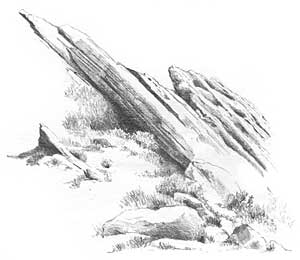
Sketching
Sketching… Never underestimate the power of just sketching. I seldom just sit and watch television, but when I do, I usually have a folder full of photos and I just sketch. Here is a sketch of a group of rocks...Find some photos of rocks and sketch them. Don't let the rest of the landscape intimidate you as you sketch the rocks. Pick out the sections that interest you and just sketch.
Creating three-dimensionality and form
At first glance they seem to be easy to draw. I find they a bit more challenging than that. They beg to have three-dimensionality and form. Light and shading play an important roll in drawing realistic rocks.I find the best comparison to make is to use a cube. In order to create this three-dimensional form we have to use light and shadow. The plane with the most direct sunlight is the brightest. The plane with the no sunlight is the darkest. With a strong light, the shadow will be short and dark.
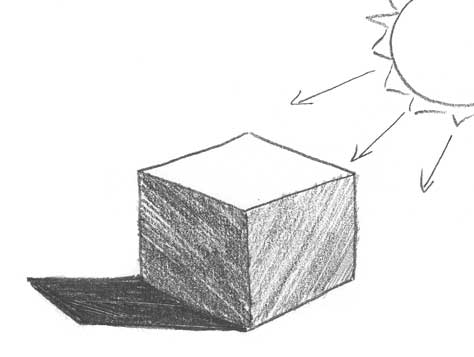
Let's relate this concept to a grouping of rocks. These rocks are drawn to emphasize their angles and planes. The light source is to the upper right.
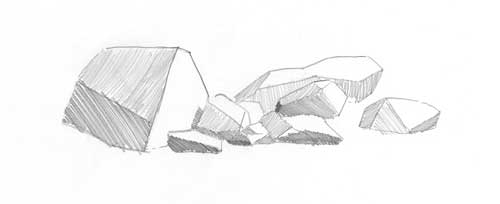
This sketch softens the edges of the rocks but the planes are still very visible, creating solid three-dimensional rocks.
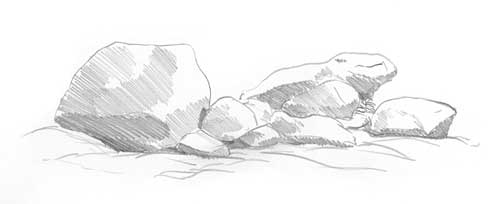
I find most tutorials stop at this point when explaining how to draw rocks. Do you see the problem with this? Will these sketches really work in a realistic landscape? What's missing or rather what is there too much of?? White. There is just not enough tone or detail too.
So let’s keep going.....
Reference photo
Here is the reference photo in both color and grayscale that we will be using for the rest of this tutorial. I like to draw and study from both images. The grayscale helps to match the tones, but color helps in the details.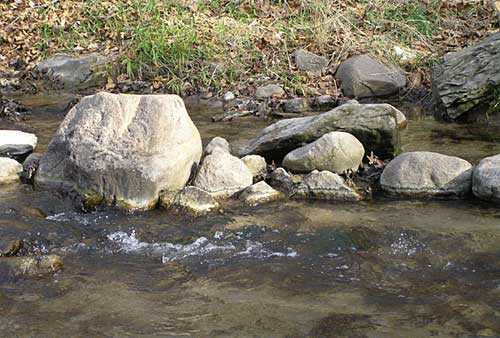
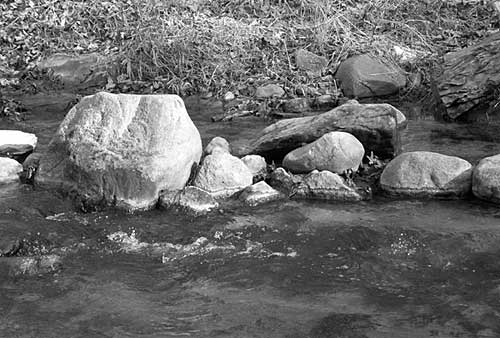
Step 1
We are going to draw the large boulder on the left. I start with a 2B pencil and sketch in the darkest areas. The lighter areas are sketched in using an F lead weight. Using short random marks, I concentrate on the indents and shadowed areas. Be sure to draw in all of the darkest areas in this step (I will explain further in the third step)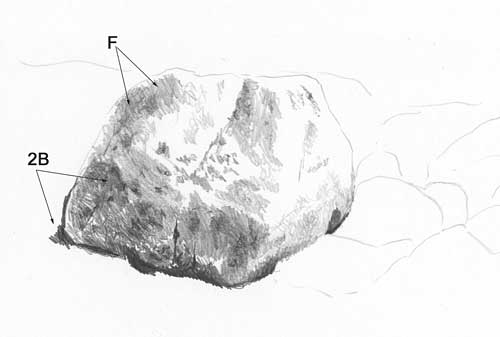
Step 2
Once you have the preliminary details drawn, use the clutch pencil with a chisel edge to apply a smooth even layer over the surface. The lighter areas I use the 4H, and use 2H in the shadowed areas. Remember the planes and angles for lighting.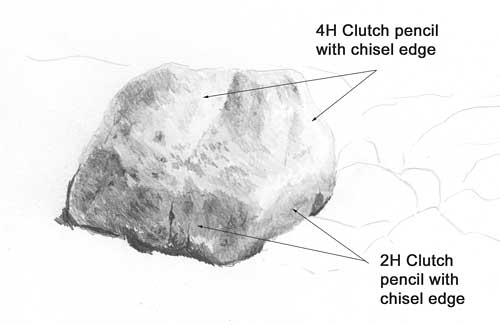
Step 3
Now the fun starts! Using a softer lead in the mechanical pencil, start creating the texture! I use random short marks to create pits and a rough surface. That's right; use a softer lead over the harder lead. We all know that using softer lead over harder lead creates a very uneven surface. But it works wonders in creating a random, uneven texture for rocks.The chisel edge is important as it creates a flat wide mark. To create a chisel edge, use sandpaper; angle your pencil and scrub!
Using these harder leads may be new to some of you, but they create wonderful light values that otherwise would be very difficult to achieve.
Continue building and layering. Use the Blu-Tack to create subtle highlights. Press the Blu-Tack onto an area and lift the graphite off. Use the battery-operated eraser to create small strong highlights.
I mentioned in step 1 to be sure you have all your darkest areas drawn before you proceed onto step 2. The reason should be obvious. Once the harder lead is laid down, you will not be able to achieve those rich blacks!
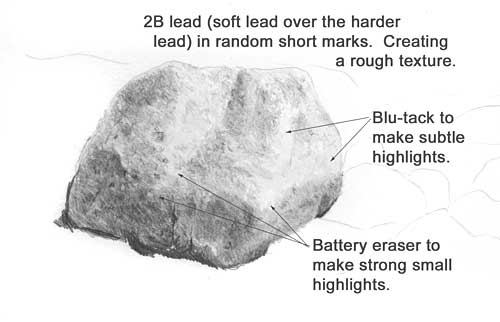
Here is my completed rock study...
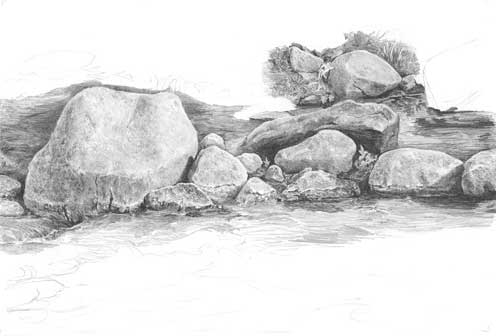
DOWNLOAD AVAILABLE:
This complete tutorial is available in .PDF format.
0 التعليقات:
Post a Comment